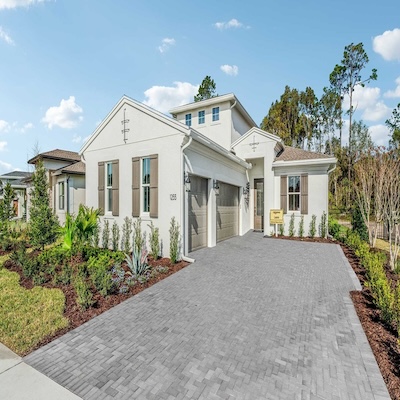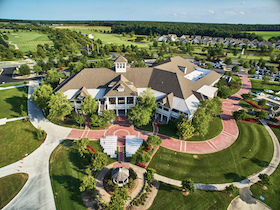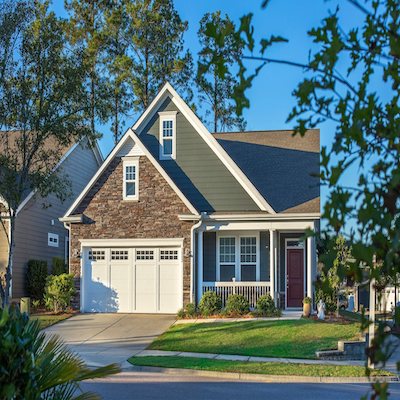How to Develop Your Personal Rating System for Active Adult Communities
Category: Retirement Real Estate
September 16, 2011 — The good news is that you have been out looking at active adult or 55+ communities. Scoping out different communities, their homes, and the amenities is an important step in the process of finding your best place to retire. But the bad news is that unless you have a good system for evaluating what you are seeing and learning, or if you don’t rate the communities when they are fresh in your mind, they are all going to blend together as time goes on. Which leads us to today’s article, how to develop an easy-to-use and reliable system for evaluating active adult communities. Note that the same system can be used for rating towns and cities, should you not be interested in a private development. To give you a head start on the process, here is an Excel based community rating spreadsheet developed by our correspondent Jay Michaels, which you can download and customize. >And here is a Google Docs version of the Rating Spreadsheet which can be viewed but not modified, in the event you can’t open Excel files.
The first task in developing a rating system is to identify your priorities. They will differ by person, but the most common priorities in selecting a 55+ community are:
– Activities and Lifestyle. Does the community have the amenities and things you would enjoy?
– Homes. Do the homes have the style, size, and functionality you want?
– Neighbors. You are going to spend a lot of time with your new neighbors. Are they the kind of folks you enjoy?
– Financial. In addition to initial cost, what will your ongoing expenses be? What kind of risk factors are there in the community?
– Location and Environment. How does each community’s location stack up in terms of your preferences, the distance from friends and family, and from the nearest stores and medical care? Would your children look forward to visiting you here? Is the community walkable – how about livability?
– Climate. Is it warm enough in winter, not too hot in summer? If you have 2 homes, will the climate meet your needs in the times you will be there?
– Access. How easy is it for you to get there? How about your family – is there a convenient and competitive airport?
How to use this spreadsheet
You will probably have different criteria from our sample, and you will certainly want to weight them differently. The idea behind our checklist is that once you agree on the criteria you are going to rate against, then you can assign a rating for each attribute. You can either total the points you’ve awarded to each community, or get fancier and assign a weighting scheme which allows you to give greater weight to certain attributes. In the end you will get numbers that you can use to compare and rank your choices. One of the most helpful features of a rating spreadsheet is that you will know right away if a really important attribute is lacking, which will help you to avoid a big mistake. You might also find after rating several communities that your attributes or weighting system might need to be adjusted, and that’s OK too.
For Further Reference:
Sandy’s New Home Rating Sheet
What Makes a Great Active Adult Community
What Sandy Lived in 8 Years of Visiting Active Adult Communities
Jump on Jay Michael’s Retirement Tour Bus
9 Things Betty and Jim Learned When Looking at Best Places to Retire
10 Questions to Ask Before You Buy in an Active Adult Community
Jay Michaels Community Rating Sheet
What do you think? Please provide your comments about the attributes that you think are most important. Do you have your own rating system you would like to share? Please use the Comments section below.






Comments on "How to Develop Your Personal Rating System for Active Adult Communities"
Fred in Connecticut says:
Excellent idea. It allows the individual to quantify their research on the communities they have visited. Assigning a weight to the various factors or just counting each factor the same allows the individual to examine what is really important in terms of their retirement before they make a decision on where they want to be. Putting it down on paper and then adding-up the score is what makes this important. When the individual then looks at the score, they can determine if they really agree with it. If not then there is something wrong with what they have determined there criteria to be. It allows them to examine what they are doing. This is an excellent tool. I have been doing something like this myself. There are so many communities and towns and so many different options that it is almost impossible to keep track of all of them. This helps a great deal and keeps you focused on what it is that is really important to you in your retirement.
My wife and I are planning to retire in about 2 years and we have been visiting various places in the Southeast, FL, GA, TN, SC. Frankly, I am sick and tired of visiting some of them. But we want to make the right decision and that decision is not necessarily a 55+ community. Trust me, the internet helps in eliminating some places, but you have to go there once you have selected one that is interesting and then you have to compare it to the others you have visited. This allows you to compare it more "coldly" than you might otherwise be able to do, especially if it has been a while since you have visitied some of the first places you went to. Memory is not the best thing to depend on for this. When we get to the top 2 or 3 in about a year or so, we plan to revisit them before we make a decision.
Laura says:
I've spent years helping people who are looking for a retirement community and I love this idea to help people sort through the dozens of choices and pros and cons of different living arrangements. I've met many people who have developed their own versions of this type of checklist. Considering future healthcare needs really needs to play a prominent role in planning and choosing a destination. Access to an excellent hospital system and rehab, and having a plan for long-term care needs to be at the top of the list. If you prioritize lifestyle amenities over health care availability, be prepared to make a second move later. If you want to move once, consider a continuing care retirement community.